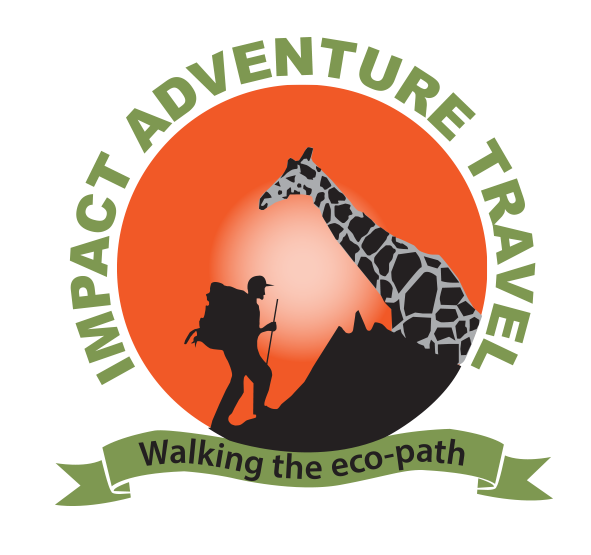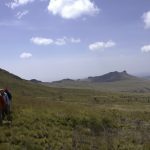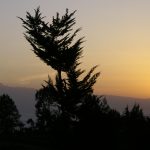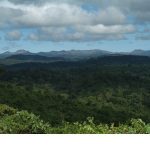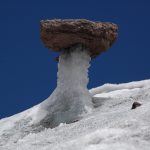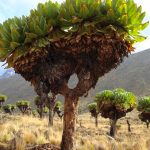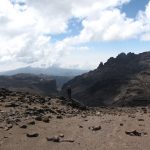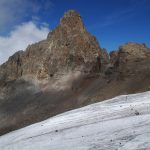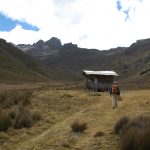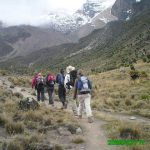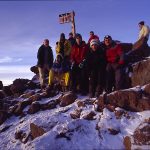Aberdare National Park

Home of the legendary ‘Tree’ hotels – The Ark and Treetops Lodges, Aberdare National Park offers a truly magical and unrivalled wildlife viewing experience. The glamour of the close view of wildlife from the tree hotels lures thousands of visitors to this park every year. Aberdares lies in central Kenya and covers an area of 767 sq. km with an altitude range of 1829m to 4001m above sea level. The landscapes are quite diverse with deep ravines that cut through the forested eastern and western slopes. Wildlife includes Black Rhino, leopard, baboon, black and white Colobus monkey and Sykes monkey. Rarer sightings include those of lions, the golden cat and the bongo- an elusive forest antelope that lives in the bamboo forest. Animals like the eland and spotted and melanistic serval cats can be found higher up in the moorlands. The cool waters are rich in trout fish. Bird watching is rewarding, with over 250 species of birds in the park, including the Jackson’s Francolin, sparrow hawk, goshawks, eagles, sunbirds and plovers.
- Camping in Aberdares
- Hiking in the Aberdare mountains
- Sunrise in the Aberdare mountains
- Aberdare Mountain Range
- Aberdare waterfall
Mount Kenya

Mount Kenya
Standing at 5,199m above sea level, Mount Kenya is Africa’s second highest peak. It’s located in central Kenya and straddles the equator. It is fascinating to find a mountain with snowcaps standing right on the equator! The two highest peaks can only be conquered through technical climbing, while Point Lenana, the 3rd highest peak can be reached by any fit hiker. The mountain is a circular volcanic massif and its base is at an altitude of 1,500m with a diameter of 70 km and a circumference of 200 km. Its upper landscape is typical of glacial terrain, with peaks, cirques, tarns and U – shaped valleys. Its twin summit peaks, Batian [5199m] and Nelion [5188m] are remnants of the neck of the original volcano.
Trek with us to Kenya’s tallest peak, Mount Kenya, a mountain revered for its scenic beauty and rugged environment. More than 3 million years old, this stunning, ice-capped mountain emerged from the opening of the East African Rift. Home to diverse and unique vegetation, forests and alpine species, this mountain habitat provides a stunning contrast to the typical African safari tour and an eye-opening experience for adventure travelers. The first documented expedition of the mountain was in 1899 by a group of European explorers, but the local people’s awe of the mountain dates far back, hinging on the belief that the mountain served as God’s throne on earth.
- Mushroom rock
- Chogoria
- Equator
- Giant groundsels
- Lewis glacier
- Likii North Campsite
- Trekking
- Mt Kenya summit
Traverse the mountain’s highest peaks, including the famed Batian (5,199 meters), Nelion (5,188 meters) and Point Lenana (4,985 meters). Catch sight of the area’s wildlife, including buffalo, elephants, bush bucks (antelopes) and a plethora of bird species. From high elevations, take in panoramic views of the area’s hills, valleys and sprawling moorlands. Follow in the footsteps of the mountain’s first explorers and set foot on areas named to commemorate the local Maasai chieftains, in stopping at peaks with historical and cultural significance: visit key landmarks named after the mountain’s first adventurers, from Mackinder’s Valley to Hausberg Col, Hausberg Valley and Shipton’s Camp, and peaks commemorating famed Batian (named for Mbatian, a Maasai medicine man), Nelion (his brother) and Lenana and Sendeyo (his sons).
Hell’s Gate National Park

Hell’s Gate National Park
One of the smallest national parks in Kenya. In spite of its scary name, Hell’s Gate National Park attracts hordes of tourists all the year round. The major attraction here is the deep gorge that the park derives its name from. The gorge baffles and awes explorers and it is said to resemble ‘hell’ hence the name Hell’s gate. For the superstitious, it cannot be anything less than a cast of bad spell likened to the strange naming of the park! Visitors are allowed a free walk in this game sanctuary.
Hell’s Gate National Park is a very popular destination with cyclists. There are roads and tracks through the park, giving the visitor opportunity to cycle through herds of wild game. The park’s natural attraction is not limited to the gorge. There are also wild animals such as the rare Klipspringer, the ostrich, waterbuck, Impala, the African Buffalo and warthogs. Scenic features include steep volcanic cliffs, the famous Fischer’s tower that stands stoically in the middle of the park and the belching plumes of geothermal steams.
Mount Longonot

Mount Longonot
The name Longonot is derived from the Masai word “Oloonong’ot” meaning “mountains of many spurs or steep ridges”. Longonot park covers 52 square km most of it being occupied by Mount Longonot, a young volcano rising to 2,776 meters above sea level. The sides of the mountain have beautiful V-shaped valleys and ridges. The stony soils have little vegetation but the crater has an impenetrable forest. A day’s hike up this beautiful volcano is an exhilarating experience.

We hope these amazing places inspired you to come to Kenya! Now discover the walking safaris and the Mountain climbing we offer.
